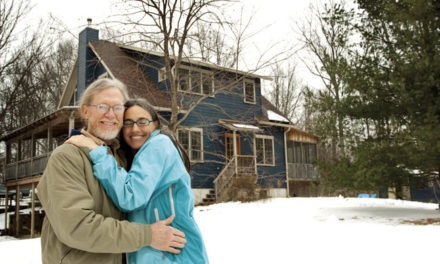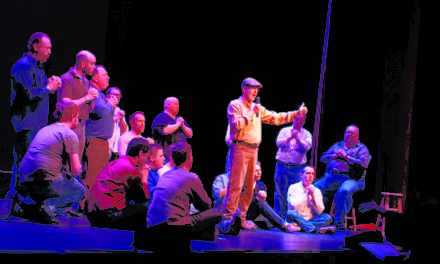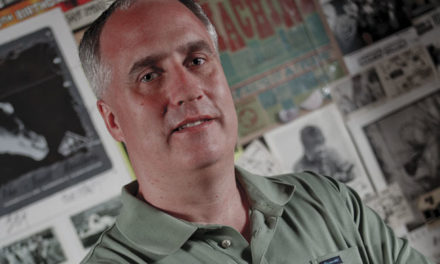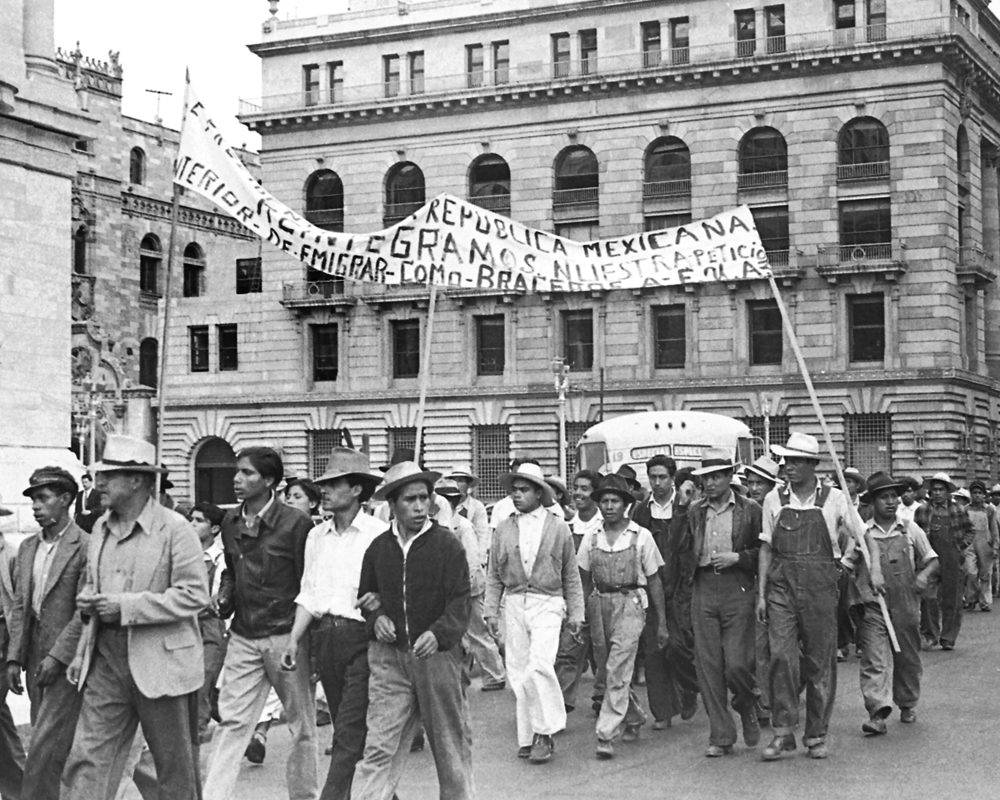
Workers in Mexico City protest being denied a contract to work in the U.S. due to the tremendous demand to participate. Courtesy photos
BY CHRISTINE FERNANDO
As American men were heading to the frontlines during World War II, Mexican braceros, or “manual laborers,” were heading to the United States to take on the jobs soldiers had left behind. A new photography exhibit at the Ivy Tech John Waldron Arts Center tells that mostly forgotten story.
Los Braceros, organized by the Indiana University Center for Latin American and Caribbean Studies (CLACS), runs November 2–26 and features 38 photos by a pair of Spanish brothers who fled the Spanish Civil War in the 1930s. The photos show braceros working, undergoing health physicals, and waving farewell to loved ones.
Anke Birkenmaier, CLACS director, says the photos reflect the often invisible experiences and struggles of immigrants today. The braceros faced grueling working conditions, low pay, lack of medical care, and prejudice, but they were doing work the country relied on. “They may be pictures from the past,” she says, “but they are relevant to us today.”
To help make that connection, The Waldron will host a roundtable discussion November 6 and set up a Day of the Dead altar for the braceros. After the show, the prints will be shipped to the University of Illinois at Urbana–Champaign as a travelling exhibit.
For Birkenmaier, the takeaway is an understanding of the long-standing relationship between the U.S. and Mexico, and how a moment in history brought Americans and Mexicans together.
Julie Roberts, The Waldron’s gallery director, hopes the exhibit will make immigrants and their descendants feel more included as members of the community. “I want them to feel seen and honored,” she says. “We want to make their history more visible.”
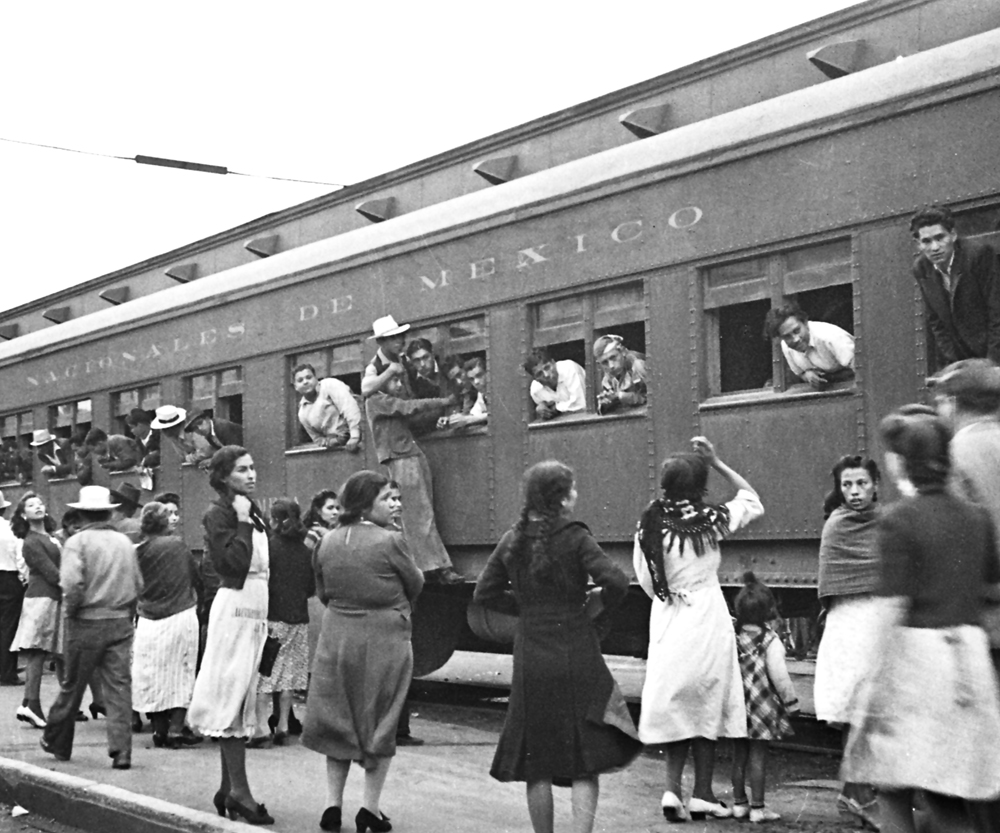
Emigrant workers and their families say goodbye at the Buenavista Train Station on one of the twice-weekly trains to the U.S./Mexican border.



